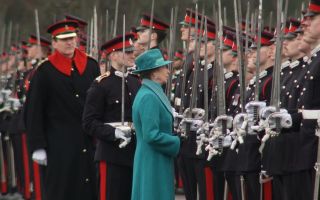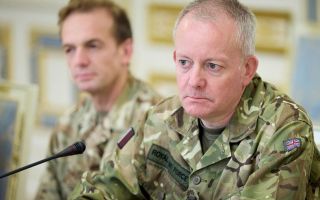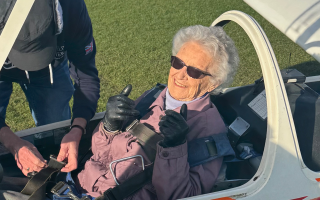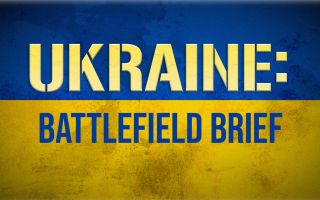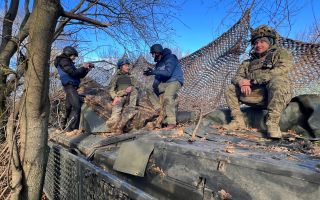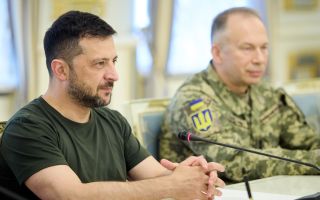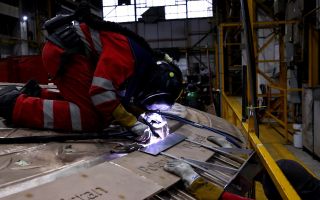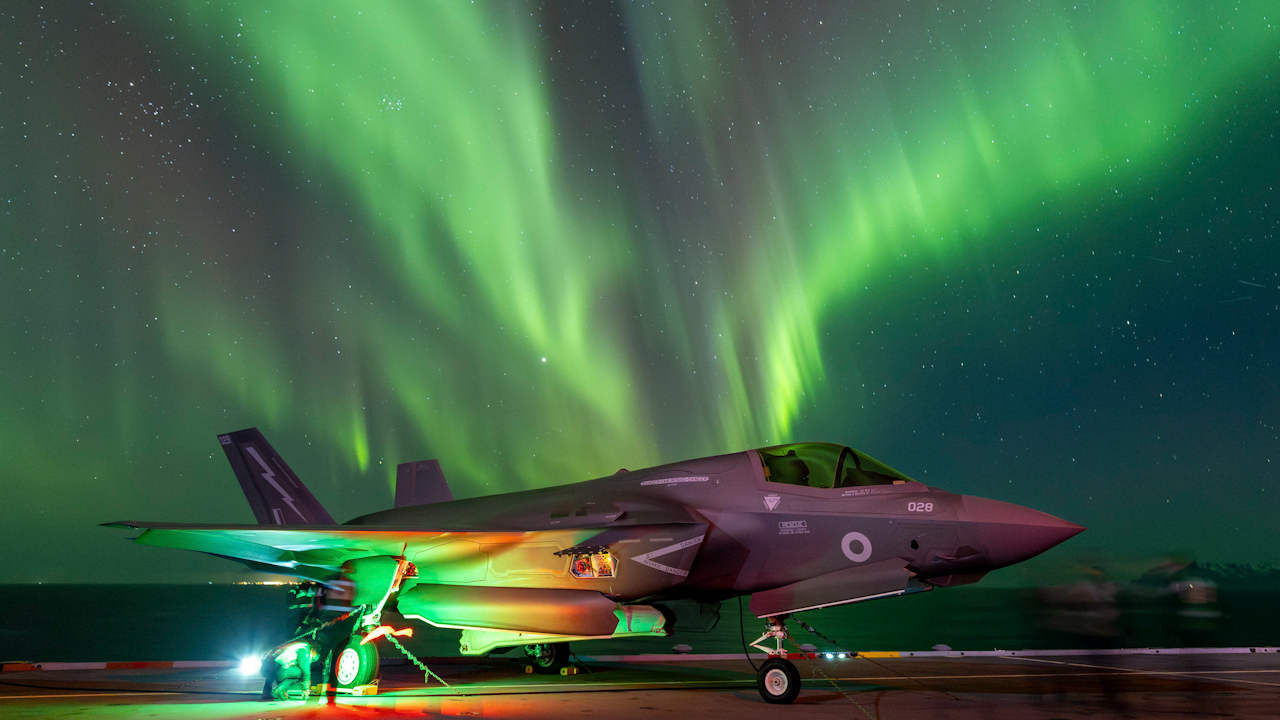
Global guardians: How UK Armed Forces have bolstered Nato missions worldwide

The North Atlantic Treaty Organisation, or Nato as it is commonly known, has reached its 75th anniversary.
It was founded in 1949 as Europe was seeking to recover from the dire physical, psychological and emotional consequences of constant combat in the Second World War.
Since then, the UK military has been at the forefront of the alliance's operational history, being involved in missions, operations and exercises all over the world.
To mark 75 years since the alliance was formed, Forces News has looked at how UK troops all over the globe contribute to Nato missions to enhance the alliance's security, deter aggression and promote peace.
Current operations
Land
UK forces recently took leadership of Nato's rapid response force – the VJTF – and provide the majority of personnel in the task force.
The Very High Readiness Joint Task Force is the highest readiness element of the larger Nato Response Force (NRF), ready to deploy air, maritime and special operations forces.
The VJTF was created after Russia's illegal annexation of Crimea in 2014, and deployed for the first time for the collective defence of the alliance after Russia's full-scale invasion of Ukraine in February 2022.
The leadership position of the VJTF is rotated annually among Nato members. Britain previously led the force in 2017.
Enhanced Forward Presence
Combat-ready British troops are stationed in the Baltic states and Poland under Nato's Enhanced Forward Presence (eFP) to deter Russian forces from potential invasion.
The Royal Gibraltar Regiment recently completed its deployment in Estonia.
Deployed on Operation Cabrit, the role of the regiment – whose nickname is the Barbarians – was to work alongside Nato allies to provide eFP in the country.
Op Cabrit, established in 2017, is the name of the UK operational deployment to Estonia and the Baltic states, where around 900 British personnel lead a multinational, combat-ready battlegroup as part of the eFP.
This formation also followed the annexation of Crimea and involves light battlegroup forces in Latvia, Lithuania, Poland and Estonia – the latter involves a rotated British force on Operation Cabrit.
Baltic states have land borders with Russia, prompting concerns they could be overpowered with an invasion.
The eFP deployment of Nato forces was established in 2016 at a Nato summit in Warsaw, with these forces now deployed on a persistent, rotational basis.
Ukraine
Before Russia invaded Ukraine in February 2022, British military personnel helped to support Ukraine in its fight against Russian aggression following the annexation of Crimea in 2014.
The UK military trained thousands of students, some of whom were volunteers, in key medical and infantry skills.
From 2015 until the Russian invasion of Ukraine in early 2022, a rotated British force on Operation Orbital shared expertise on counter-sniping, mortar planning, anti-armour, counter-improvised explosive devices and logistics.
Steadfast Defender
Hundreds of British Army vehicles were transported to Germany in January to take part in Nato's Steadfast Defender 2024.
It was the largest training exercise Nato hosted in decades, and involved Army Foxhounds, Jackals and Land Rovers.
With the assistance of the Royal Electrical & Mechanical Engineers, the vehicles and equipment were shipped to Germany ready for the exercise.
Building bridges
UK personnel have been testing and demonstrating their bridge-building skills in Poland.
British troops were among the Nato personnel on the Polish-led multinational Exercise Dragon, constructing a crossing over the Vistula River.
The Balkans
Operation Elgin is the UK's contribution to the Nato-led international task force in Kosovo.
The task force was established in 1999 and aims to assist local security authorities in maintaining a safe and secure environment for all their citizens.
This Nato-led force conducts a range of tasks including assisting with the return or relocation of missing refugees, the reconstruction and de-mining of an area, medical assistance, security and public order, border security, an ammunition and explosives amnesty programme, and weapons destruction.
The British Army holds the Strategic Reserve Force (SRF) battlegroup that can be deployed to reinforce Nato peacekeepers in the country.
This is what happened in October 2023 when 200 soldiers were sent to reinforce Nato's Kosovo Force (KFOR) peacekeeping mission.
British personnel also provide expertise in intelligence, surveillance and reconnaissance.
Sea
Steadfast Defender
At the end of March, aircraft carrier HMS Prince of Wales returned home to Portsmouth after taking part in Exercise Steadfast Defender – Nato's biggest exercise since the Cold War.
A Carrier Strike Group, led by HMS Prince of Wales, completed Exercise Joint Warrior, which was one part of Steadfast Defender.
During the Nato training, HMS Prince of Wales was joined by more than 30 ships, four submarines, multiple aircraft - from maritime patrol aircraft to F-35 Lightning jets - and more than 20,000 personnel from nations including Canada, Denmark, France and Spain.
HMS Queen Elizabeth had initially been scheduled to lead the exercise, but she had to withdraw due to an issue with her propeller shaft, leading HMS Prince of Wales to step in.
Mediterranean task group
The Royal Navy handed over command of Nato's premier task group in the Mediterranean after five months on frontline duties.
Type 45 destroyer HMS Duncan handed the reins of Standing Nato Maritime Group Two to the Italian navy.
Nineteen ships from nine Nato nations operated under HMS Duncan as the task group carried out its role in the alliance's Very High Readiness Joint Task Force.
Maritime security
Nato conducts three main operations and activities in the maritime domain: the Alliance's Standing Naval Forces, Operation Sea Guardian and the Aegean Activity.
Royal Navy vessels have in recent years deployed to Nato's Standing Mine Countermeasures Group One, including HMS Blyth.
The deployment has involved patrolling northern European waters, carrying out combined training, dealing with any wartime ordnance and generally flying the flag for the alliance.
Air
Nato Air Policing
The RAF contributes to 24/7 Nato air policing missions to secure the skies above nations on Russia's doorstep, including Latvia, Estonia and Lithuania.
These Baltic states do not have the capability to police their own skies, so allies step in to ensure each member is offered the same level of protection.
Alliance fighter jets have repeatedly intercepted Russian aircraft violating airspace boundaries.
Royal Air Force aircraft have also patrolled the skies over Iceland.
The island's strategic geographical location and a lack of its own air force has prompted the alliance to deploy jets there for around a month at a time, three times a year, for peacekeeping purposes.
At the end of 2023, Royal Air Force Typhoon crews went to Spain to take part in an exercise with Nato allies and partners to help develop their tactical and leadership skills.
Typhoons from 29 Squadron at RAF Coningsby were involved in the Tactical Leadership Programme (TLP), a long-running initiative to improve the interoperability and effectiveness of allied air forces.
The three-week exercise consisted of a one-week simulator phase followed by a two-week flying phase during which the participants were exposed to threats in realistic and challenging missions.
On Exercise Atlantic Trident, RAF Typhoons practised responding to an attack on their main operating bases.
The fighter jets worked alongside French Rafale and US F-35A jets.
Air defences
Britain recently announced it would extend the deployment of 100 personnel in Poland, with the Sky Sabre system remaining there until the end of the year.
The air defence system is protecting Nato's eastern flank amid Russian aggression in Ukraine, securing routes such as the Jasionka Airport and roads that support the passage of military and humanitarian aid to Ukraine.
Defence Secretary Grant Shapps made the announcement on a visit to the Orzysz military range in Poland – where Exercise Dragon 24 was taking place.
The UK bases used by the alliance
Imjin Barracks
Based in Gloucester, the site represents the HQ for both Nato's Allied Rapid Reaction Corps (ARRC) and 1st Signal Brigade.
The ARRC force dates back to the early 1990s, the allies' first military response to the post-Soviet world and the ensuing uncertainty.
The corps was quickly put through its paces with peace interventions in Bosnia and Kosovo, and moved from Rheindahlen in Germany to Imjin Barracks a decade ago.
1st Signal Brigade is made up of specialist sub-units to support Nato joint forces such as ARRC with communications technology across the globe.
Northwood Headquarters
This north-west London base once housed RAF Coastal Command.
It now hosts five operational headquarters. Allied Maritime Command (Marcom) is one of Nato's three major Commands alongside Landcom and Aircom.
Marcom is the primary maritime adviser to the alliance, with about 300 military and civilian employees responsible for planning and commanding a range of exercises and operations.
Royal Air Force Molesworth
Located close to Cambridge and closely aligned with nearby RAF Alconbury, this air station plays a vital role in defence intelligence.
The Nato Intelligence Fusion Centre (IFC) falls under the command of Supreme Allied Commander Europe and provides the alliance with intelligence to warn of potential crisis situations and support Nato Special Operations forces.
Fully operational since 2007, the organisation has produced strategic assessments for Afghanistan, Kosovo, Gulf of Aden and Libya operations, while also referenced by military planners on behalf of the European Union.
Royal Naval Air Station Yeovilton
The military airfield in Somerset is one of the UK's busiest.
It is also home to Nato Joint Electronic Warfare Core Staff (JEWCS), providing the group with electronic warfare capability and specialised training under the same remit.
JEWCS also offers expertise on how to react to a hostile electromagnetic environment alongside other contingency planning, and feeds any new information from experiments through to other Nato members.
Beacon Barracks, Stafford
The barracks is home to 22 Signal Regiment, which sits within 1 Signal Brigade and delivers Information Communication Services (ICS) to Nato's Allied Rapid Reaction Corps.
The British Army's Royal Signals are trained to be experts in engineering and operating systems, networks and cyber technology.

